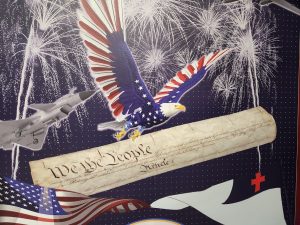$1 Million Dollar Challenge to Replicate the Shroud
The resurrection of Jesus from the dead is the cornerstone of historic Christianity. But is there scientific evidence it really happened? Some scholars believe that yes, there is and it’s in a cathedral in Turin, Italy.
The Shroud of Turin, a linen cloth 14 feet by 3 feet, contains the image of a man who was badly scourged, was crucified, wore a crown of thorns, and was stabbed in the chest with a Roman lance. Of course, all of these wounds fit what the Bible says happened to Jesus. Is the Shroud of Turin Jesus’ actual “clean linen shroud” given to Him in death by Joseph of Arimathea?
The word in Greek for shroud is sindon. There are many scientists who specialize in sindonology, which means study of the Shroud of Turin. Scientists such as physicist John Jackson, Ph.D. of Colorado Springs or the late biophysicist Dr. John Heller, author of the seminal book, Report on the Shroud of Turin.
The late Alan Whanger, M.D. of Duke Medical Center, once told me: “The Shroud is the most intensely studied single object in existence. There are probably 67 different fields of scientific and academic interests that have looked into the Shroud in one way in another.” He also said, “it provides scientific proof that something so extraordinary happened that there doesn’t seem to be anything else in human history that would fit.”
The Shroud was dismissed by some as a fake because of the carbon-dating in 1988 of a single specimen (divided into three tiny parts). They claimed the specimens dated to around 1260-1390. But critics of that particular test say that the sample chosen came from a rewoven (and dyed) part of the Shroud, which was often displayed during the Middle Ages.
Meanwhile, in February 2024 in Washington, D.C., there was a press conference at which British film-maker David Rolfe issued a million-dollar challenge: Make an accurate replica with the means available to a supposed Medieval forger, and you can win a million dollars. (The deadline is May 31).
Recently, I did a radio interview with Rolfe, who made such great documentaries as “Silent Witness.”
Consider these facts. The Shroud is the most scientifically studied artifact in the world. That includes the 40 space age scientists who had round-the-clock access to the Shroud for five days in 1978. This group was known as “STURP,” The Shroud of Turin Research Project.
Some of them thought they would prove this thing to be a fake within 10 minutes. But they soon learned how wrong that assumption was.
A few years later, they sent out an official summary of their conclusions. They wrote, “We can conclude for now that the Shroud image is that of a real human form of a scourged, crucified man. It is not the product of an artist.” [emphasis added]
We know where the Shroud has been since 1357, when it showed up in the household of a French crusader. Consider these facts:
- The human anatomy represented on the Shroud is 100% accurate—far ahead of what they knew back in 1357.
- The Shroud’s image is a photographic negative—that’s 500 years before photography was developed.
- The faint image on the Shroud was not painted on. It was somehow lightly burned on. Shroud-film-maker David Rolfe told me that there was “an unbelievable amount of energy in an infinitesimally small amount of time” (40-billionth of a second) that produced this image.
- The blood on the Shroud is real human blood—with all the wounds corresponding with the passion of Jesus in the Gospels. The blood type was rare—AB+. The blood did not see decay—meaning, He was sandwiched inside that cloth for about 36 hours. Yet the blood was undisturbed, which means He somehow went through the cloth (or dematerialized within the cloth). It was not yanked off Him.
- The image of the Shroud is three-dimensional. Paintings and pictures don’t have that property.
And on and on it goes.
Long ago, author Marc Antonacci noted in his book, The Resurrection of the Shroud (2001), that if a Medieval artist put the Shroud together, he “would have had to have a knowledge of light negativity, light spectrometry, microscopy, radiology, human physiology, pathology, hematology, endocrinology, forensics, and archaeology.” (pp. 8-9)
In the colonial days, there was a common practice in the Anglican churches to display the Apostles’ Creed, the Lord’s Prayer, and the Ten Commandments in large words. This panel on the walls is called a reredos. Of course, included in the creed is that Jesus rose from the dead.
In my view, the more you study about the Shroud, the more you realize, Wow, this is a scientific reminder of the fact that Jesus is risen. “He is risen indeed.”
###
Jerry Newcombe is the executive director of Providence Forum, a division of Coral Ridge Ministries, where Jerry also serves as senior producer and an on-air contributor. He has written/co-written 33 books, including (with D. James Kennedy), What If Jesus Had Never Been Born? and (with Dr. Peter Lillback), George Washington’s Sacred Fire.
Editor’s Note: In Robert Orlando’s new movie on the Shroud, “Face to Face,” at about 56 minutes in comes a comment from Father Robert Spitzer, S.J., about what it took to make the image on the Shroud: “What you would have to do is generate 6-8 billion watts of vacuum, ultra-violet radiation, which would be [equivalent to] half a million search lights’ worth of light energy coming from the body…for 1/40-billionth of a second.”




